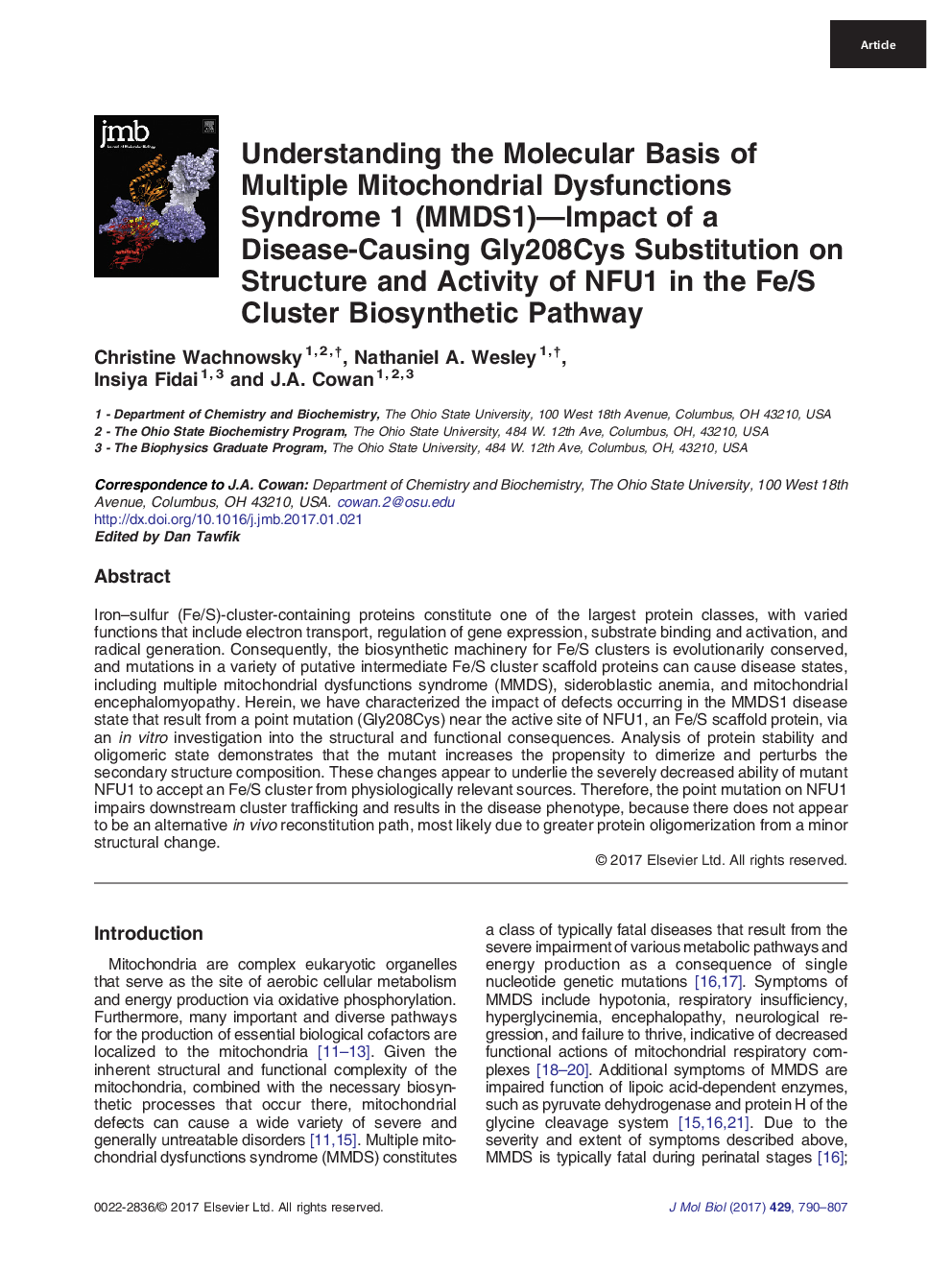| کد مقاله | کد نشریه | سال انتشار | مقاله انگلیسی | نسخه تمام متن |
|---|---|---|---|---|
| 5533170 | 1402105 | 2017 | 18 صفحه PDF | دانلود رایگان |

- A point mutation (G208C) on human NFU1 results in a disease phenotype, MMDS1.
- The G208C mutation introduces a minor structural change that promotes dimerization.
- The dimerization impairs Fe/S cluster transfer capabilities.
- Mutant NFU1 cannot accept cluster, preventing function and downstream delivery.
Iron-sulfur (Fe/S)-cluster-containing proteins constitute one of the largest protein classes, with varied functions that include electron transport, regulation of gene expression, substrate binding and activation, and radical generation. Consequently, the biosynthetic machinery for Fe/S clusters is evolutionarily conserved, and mutations in a variety of putative intermediate Fe/S cluster scaffold proteins can cause disease states, including multiple mitochondrial dysfunctions syndrome (MMDS), sideroblastic anemia, and mitochondrial encephalomyopathy. Herein, we have characterized the impact of defects occurring in the MMDS1 disease state that result from a point mutation (Gly208Cys) near the active site of NFU1, an Fe/S scaffold protein, via an in vitro investigation into the structural and functional consequences. Analysis of protein stability and oligomeric state demonstrates that the mutant increases the propensity to dimerize and perturbs the secondary structure composition. These changes appear to underlie the severely decreased ability of mutant NFU1 to accept an Fe/S cluster from physiologically relevant sources. Therefore, the point mutation on NFU1 impairs downstream cluster trafficking and results in the disease phenotype, because there does not appear to be an alternative in vivo reconstitution path, most likely due to greater protein oligomerization from a minor structural change.
Graphical Abstract70
Journal: Journal of Molecular Biology - Volume 429, Issue 6, 24 March 2017, Pages 790-807